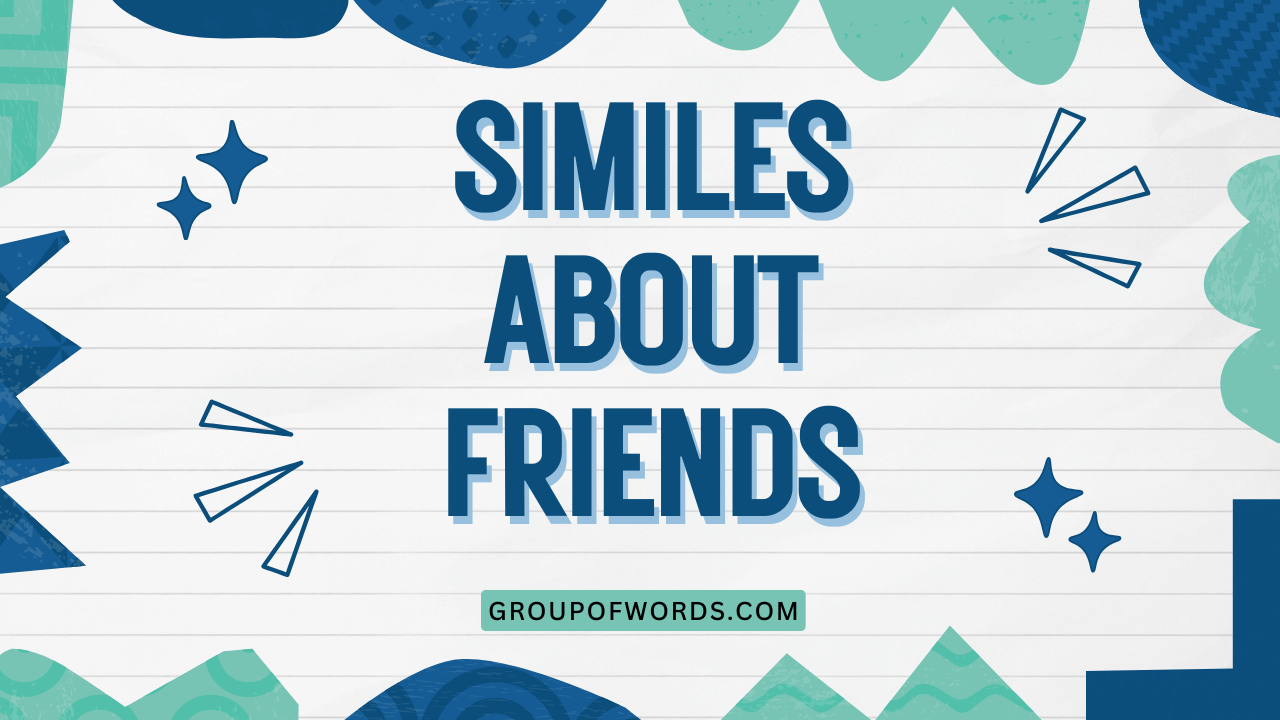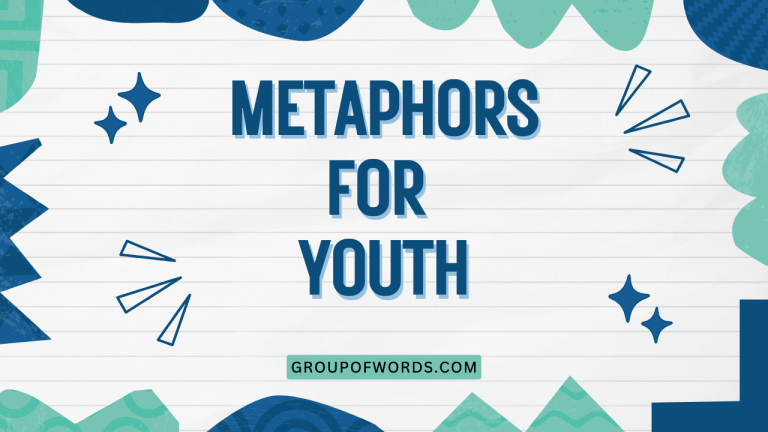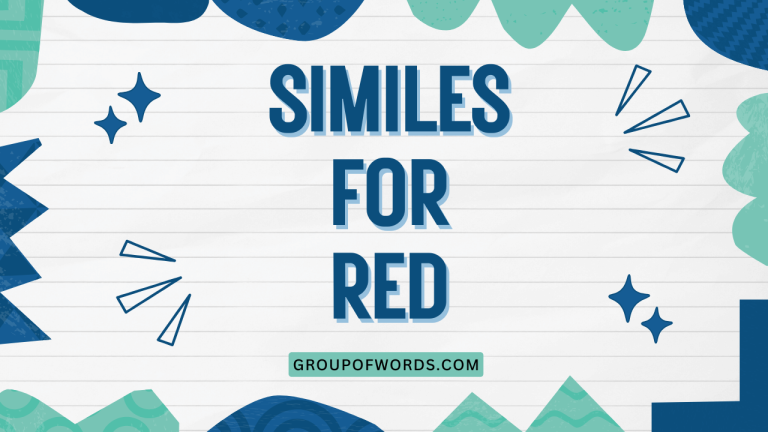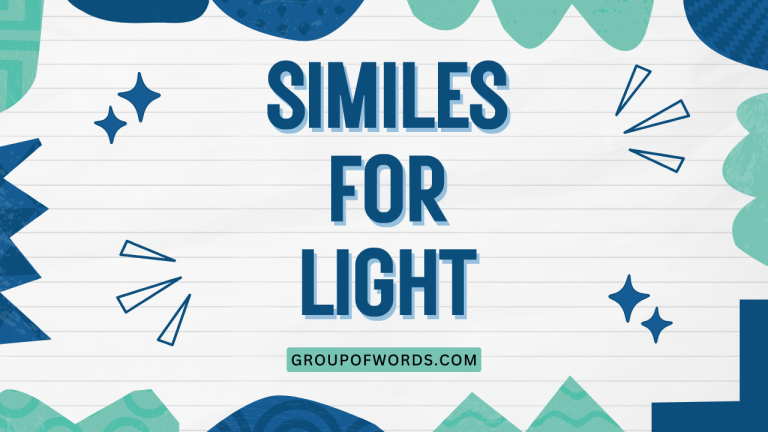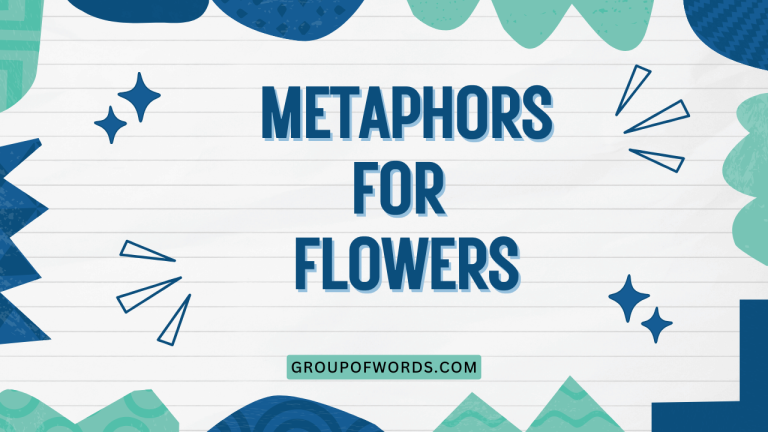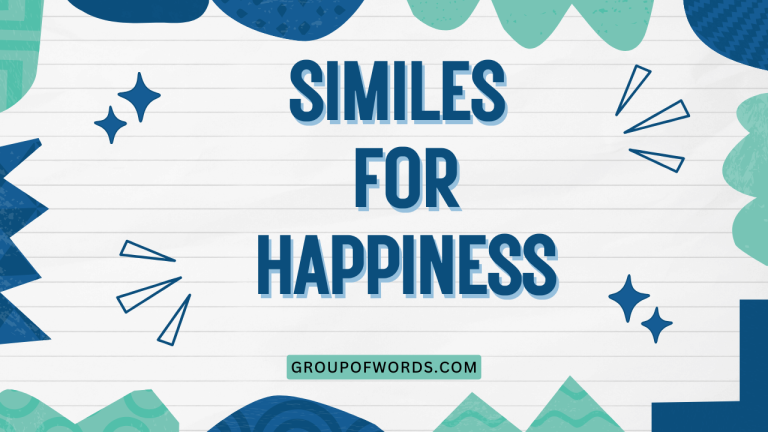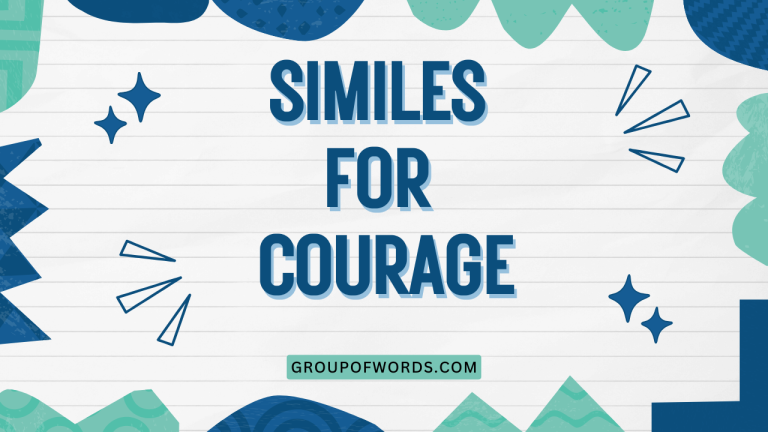Friends as Figurative Language: Mastering Similes
Understanding similes is crucial for enriching your English vocabulary and enhancing your ability to express yourself vividly. This article focuses specifically on similes used to describe friends, exploring how these comparisons can add depth and nuance to your descriptions.
Whether you’re an ESL student, a writer looking to improve your prose, or simply someone who enjoys playing with language, this guide will provide you with a comprehensive understanding of similes and their effective use in describing friendships.
This article is designed for English language learners, writers, and anyone interested in improving their descriptive writing skills. By the end of this guide, you’ll be able to identify, understand, and use similes effectively to paint a more compelling picture of your friends and the unique qualities they possess.
Table of Contents
- What is a Simile?
- Structural Breakdown of Similes
- The Purpose of Using Similes about Friends
- Types of Similes Used for Describing Friends
- Examples of Similes about Friends
- Usage Rules for Similes
- Common Mistakes When Using Similes
- Practice Exercises
- Advanced Topics: Metaphors vs. Similes
- Frequently Asked Questions (FAQ)
- Conclusion
What is a Simile?
A simile is a figure of speech that directly compares two different things, explicitly using the words “like” or “as.” It’s a powerful tool for making descriptions more vivid and relatable. Unlike a metaphor, which states that one thing is another, a simile suggests that one thing is similar to another in some way.
Similes add color and depth to writing by drawing parallels between familiar concepts and the subject being described. This allows the reader to form a more concrete and imaginative understanding.
In the context of describing friends, similes can capture unique personality traits, habits, and qualities in a memorable way.
For example, instead of simply saying “My friend is funny,” you could say “My friend is as funny as a stand-up comedian,” which provides a more specific and engaging image. This comparison highlights the friend’s humor by associating it with something universally recognized as funny.
Structural Breakdown of Similes
The basic structure of a simile is quite simple and usually follows one of these patterns:
* **A is like B:** This is the most common structure, where ‘A’ is the subject being described, and ‘B’ is what it is being compared to.
* **A is as [adjective] as B:** This structure adds an adjective to further specify the quality being compared.
Here’s a breakdown:
1. **Subject (A):** The person, place, thing, or idea being described. In this case, it’s your friend.
2. **Connecting Word:** Either “like” or “as.”
3. **Object of Comparison (B):** The thing the subject is being compared to. This should be something familiar or easily understood by the audience.
4. **Optional Adjective:** An adjective that clarifies the specific quality being compared (used only in the “as [adjective] as” structure).
Let’s look at an example:
* **My friend (Subject) is as (Connecting Word) brave (Adjective) as a lion (Object of Comparison).**
The Purpose of Using Similes about Friends
Using similes to describe friends serves several important purposes. First, it enhances clarity and understanding by providing a relatable point of reference.
Instead of abstractly stating a quality, a simile anchors it to a concrete image.
Second, similes add emotional depth and color to descriptions. They can evoke specific feelings or associations in the reader’s mind, making the description more engaging and memorable.
For example, saying a friend is “as warm as the sun” conveys not only their kindness but also a sense of comfort and joy.
Finally, similes allow for creative expression and personalization. They offer a way to highlight the unique qualities of your friends in a way that is both accurate and imaginative.
By choosing the right comparison, you can capture the essence of their personality and the special bond you share.
Types of Similes Used for Describing Friends
Similes can be categorized based on the type of quality they are emphasizing. Here are some common types:
* **Similes Describing Personality:** These focus on inner qualities like kindness, bravery, or humor.
* **Similes Describing Behavior:** These emphasize how a friend acts or reacts in certain situations.
* **Similes Describing Appearance:** These focus on physical traits or characteristics.
* **Similes Describing Shared Experiences:** These highlight common memories or activities that define the friendship.
Examples of Similes about Friends
The following sections provide numerous examples of similes used to describe friends, categorized by the quality being emphasized.
Similes Describing Positive Qualities
These similes highlight the admirable traits of a friend.
The table below contains different examples of positive qualities of friends that can be described using similes.
| Simile | Explanation |
|---|---|
| As loyal as a dog | Implies unwavering faithfulness and devotion. |
| As kind as an angel | Suggests exceptional goodness and compassion. |
| As brave as a lion | Indicates fearlessness and courage. |
| As cheerful as a lark | Describes someone who is always happy and optimistic. |
| As wise as an owl | Suggests intelligence and good judgment. |
| As patient as a saint | Describes someone who is incredibly tolerant and understanding. |
| As generous as a king | Implies a willingness to share and give freely. |
| As honest as the day is long | Indicates unwavering truthfulness and integrity. |
| As supportive as a pillar | Suggests strength and reliability in offering help. |
| As radiant as the sun | Describes someone with a bright and uplifting presence. |
| As gentle as a lamb | Implies kindness and a non-aggressive nature. |
| As warm as a summer day | Suggests a comforting and welcoming personality. |
| As steadfast as a mountain | Indicates unwavering loyalty and reliability. |
| As pure as snow | Describes someone with innocence and integrity. |
| As brilliant as a star | Suggests intelligence and exceptional talent. |
| As forgiving as God | Implies an exceptional capacity to pardon others. |
| As graceful as a swan | Describes someone with elegance and poise. |
| As humble as a monk | Indicates a lack of arrogance and a modest nature. |
| As resilient as a rubber ball | Suggests the ability to bounce back from adversity. |
| As serene as a still lake | Describes someone with a calm and peaceful demeanor. |
| As sharp as a tack | Indicates intelligence and quick wit. |
| As delightful as a spring breeze | Suggests a pleasant and refreshing presence. |
| As dependable as sunrise | Implies reliability and consistency. |
| As comforting as a warm blanket | Describes someone who provides solace and support. |
| As vibrant as a rainbow | Suggests a lively and energetic personality. |
Similes Describing Negative Qualities (Use with Caution)
While similes can be used to point out flaws, it’s important to use them with sensitivity and respect. These examples are provided for illustrative purposes only and should be used carefully in real-life situations.
The examples in the table below illustrate how similes can be used to describe negative qualities, but remember to use them cautiously and thoughtfully.
| Simile | Explanation |
|---|---|
| As stubborn as a mule | Implies extreme resistance to change or persuasion. |
| As slow as molasses | Describes someone who is very slow or sluggish. |
| As messy as a pigsty | Suggests extreme untidiness. |
| As grumpy as a bear | Describes someone who is often irritable and bad-tempered. |
| As sly as a fox | Indicates cunning and deceptiveness. |
| As loud as a foghorn | Describes someone with a very loud voice. |
| As boring as watching paint dry | Suggests a complete lack of excitement or interest. |
| As clumsy as a bull in a china shop | Implies a lack of grace and a tendency to break things. |
| As cold as ice | Describes someone who is emotionally distant and unfeeling. |
| As forgetful as a sieve | Suggests a poor memory. |
| As awkward as a newborn giraffe | Implies clumsiness and lack of coordination. |
| As dense as a brick | Describes someone who is unintelligent or slow to understand. |
| As irritating as nails on a chalkboard | Suggests something highly annoying. |
| As predictable as the sunrise | Describes someone who lacks originality or spontaneity. |
| As restless as a hummingbird | Implies a constant need for movement and activity. |
| As secretive as a spy | Describes someone who is unwilling to share information. |
| As tense as a coiled spring | Suggests anxiety and nervousness. |
| As vain as a peacock | Describes someone who is excessively proud of their appearance. |
| As wasteful as water through a sieve | Implies an inability to conserve resources. |
| As zealous as a fanatic | Describes someone with excessive enthusiasm, often to an extreme. |
| As bitter as lemon | Describes someone who is resentful or cynical. |
| As fragile as glass | Suggests emotional vulnerability. |
| As greedy as a wolf | Implies an insatiable desire for possessions. |
| As helpless as a baby bird | Describes someone who is incapable of taking care of themselves. |
| As indecisive as a leaf in the wind | Suggests an inability to make choices. |
Similes Describing Quirks and Habits
These similes capture the unique and often amusing habits of a friend.
The table below provides similes for describing quirks and habits, adding a touch of humor and personality to your descriptions.
| Simile | Explanation |
|---|---|
| Eats like a bird | Describes someone who eats very little. |
| Sleeps like a log | Indicates someone who sleeps soundly and deeply. |
| Talks like a machine gun | Describes someone who speaks very rapidly and continuously. |
| Laughs like a hyena | Suggests a loud and somewhat unsettling laugh. |
| Sings like an angel | Describes someone with a beautiful singing voice. |
| Works like a beaver | Implies diligence and hard work. |
| Dances like a dream | Describes someone who dances gracefully and effortlessly. |
| Forgets things like clockwork | Suggests a consistent and predictable pattern of forgetfulness. |
| Collects things like a magpie | Describes someone who compulsively gathers objects. |
| Worries like a mother hen | Implies excessive concern and anxiety. |
| Drinks like a fish | Describes someone who consumes a lot of alcohol. |
| Spends money like water | Suggests a wasteful and extravagant spending habit. |
| Reads books like a scholar | Implies a deep and studious approach to reading. |
| Chews gum like a cow | Describes someone who chews gum loudly and conspicuously. |
| Stares like a deer in headlights | Suggests being frozen with fear or surprise. |
| Nods off like a sleepy puppy | Describes someone who falls asleep easily and quickly. |
| Fidgets like a toddler | Implies restlessness and an inability to stay still. |
| Giggles like a schoolgirl | Describes a high-pitched and often silly laugh. |
| Hums like a busy bee | Suggests a constant and quiet humming sound. |
| Mumbles like a sleepy bear | Describes unclear and indistinct speech. |
| Paces like a caged tiger | Implies restlessness and agitation. |
| Snores like a freight train | Describes loud and heavy snoring. |
| Swears like a sailor | Suggests frequent use of vulgar language. |
| Whistles like a songbird | Describes a melodious and cheerful whistling sound. |
| Yells like a banshee | Implies a loud and piercing scream. |
Similes Describing Personality Traits
These similes focus on the core characteristics that define a friend’s personality.
The table below contains examples of similes used to describe personality traits, providing a deeper understanding of your friends’ characters.
| Simile | Explanation |
|---|---|
| As bubbly as champagne | Describes someone who is lively and enthusiastic. |
| As calm as a still pond | Suggests a peaceful and serene nature. |
| As driven as a race car | Implies ambition and determination. |
| As eccentric as an artist | Describes someone with unconventional and quirky traits. |
| As focused as a laser beam | Suggests intense concentration and attention to detail. |
| As gregarious as a politician | Describes someone who is outgoing and enjoys socializing. |
| As humble as a servant | Implies modesty and a lack of arrogance. |
| As idealistic as a dreamer | Describes someone who is optimistic and believes in the best. |
| As jovial as Santa Claus | Suggests a cheerful and good-natured personality. |
| As keen as a detective | Implies a sharp and perceptive mind. |
| As logical as a computer | Describes someone who is rational and analytical. |
| As meticulous as a surgeon | Suggests precision and attention to detail. |
| As nurturing as a mother | Describes someone who is caring and supportive. |
| As optimistic as a child | Implies a positive and hopeful outlook. |
| As passionate as a lover | Describes someone with intense feelings and enthusiasm. |
| As quick-witted as a comedian | Suggests intelligence and a sharp sense of humor. |
| As resourceful as a scout | Describes someone who is skilled at finding solutions. |
| As sensitive as a poet | Implies emotional depth and empathy. |
| As thoughtful as a philosopher | Describes someone who is reflective and contemplative. |
| As understanding as a therapist | Suggests empathy and the ability to listen without judgment. |
| As versatile as a chameleon | Describes someone who can adapt to different situations. |
| As warm-hearted as a philanthropist | Implies generosity and compassion for others. |
| As xenial as an ambassador | Describes someone who is welcoming and hospitable to strangers. |
| As youthful as a teenager | Suggests energy and enthusiasm for life. |
| As zealous as a crusader | Describes someone with intense passion and dedication. |
Similes Describing Shared Experiences
These similes highlight memories and activities that strengthen the bond between friends.
The table below provides similes related to shared experiences, emphasizing the unique connections between friends.
| Simile | Explanation |
|---|---|
| As inseparable as two peas in a pod | Describes friends who are very close and always together. |
| As comfortable together as an old shoe | Suggests a relaxed and familiar friendship. |
| As thick as thieves | Implies a close and often mischievous friendship. |
| As connected as siblings | Describes a deep and familial bond. |
| As intertwined as vines | Suggests a close and inseparable connection. |
| As linked as a chain | Implies a strong and unbreakable bond. |
| As united as a team | Describes friends who work well together and support each other. |
| As synchronized as dancers | Suggests a harmonious and coordinated friendship. |
| As complementary as puzzle pieces | Describes friends who fit together perfectly. |
| As close as family | Implies a deep and loving connection. |
| As bonded as partners | Describes friends who are committed to each other. |
| As aligned as stars | Suggests a harmonious and destined friendship. |
| As resonant as echoes | Implies a deep understanding and connection. |
| As reliable as a compass | Describes someone who always guides and supports you. |
| As cherished as a memory | Suggests a friendship that is treasured and valued. |
| As vital as air | Describes a friendship that is essential and life-giving. |
| As constant as the sea | Implies a friendship that is unwavering and enduring. |
| As vibrant as a garden | Describes a friendship that is full of life and growth. |
| As comforting as a fire on a cold night | Suggests a friendship that provides warmth and solace. |
| As enlightening as a sunrise | Describes a friendship that brings clarity and understanding. |
| As adventurous as explorers | Implies a friendship that embraces new experiences. |
| As creative as artists | Describes a friendship that fosters imagination and innovation. |
| As supportive as cheerleaders | Suggests a friendship that encourages and uplifts. |
| As harmonious as a symphony | Describes a friendship that is balanced and beautiful. |
| As inspiring as mentors | Implies a friendship that motivates and guides. |
Usage Rules for Similes
While similes are relatively straightforward, there are a few key rules to keep in mind:
1. **Clarity:** The comparison should be clear and easily understood. The object of comparison (B) should be something familiar to the audience.
2. **Relevance:** The comparison should be relevant to the quality being described. Don’t compare unrelated things.
3. **Originality:** While common similes are acceptable, try to create original comparisons to make your writing more engaging.
4. **Context:** Consider the context and audience when choosing a simile. What might be appropriate in one situation could be inappropriate in another.
5. **Avoid Clichés:** While sometimes unavoidable, try to avoid overused similes like “as busy as a bee” or “as strong as an ox.” These can make your writing sound uninspired.
Common Mistakes When Using Similes
Here are some common mistakes to avoid when using similes:
* **Using Metaphors Instead of Similes:** Confusing similes with metaphors is a common error. Remember that similes use “like” or “as,” while metaphors directly equate two things.
* **Incorrect (Metaphor):** My friend is a ray of sunshine.
* **Correct (Simile):** My friend is like a ray of sunshine.
* **Making Illogical Comparisons:** The comparison should make sense and highlight a shared quality.
* **Incorrect:** My friend is as tall as a tree, but he’s also as fast as a cheetah. (Height and speed are unrelated in this context).
* **Correct:** My friend is as tall as a tree. (Focuses on height).
* **Overusing Similes:** Using too many similes can make your writing feel forced and unnatural. Use them sparingly and only when they add value.
* **Using Mixed Metaphors/Similes:** Avoid mixing different figures of speech within the same sentence or idea.
* **Incorrect:** He’s burning the midnight oil and climbing the corporate ladder like a fish out of water. (Mixing idioms and similes creates a confusing image).
* **Correct:** He’s burning the midnight oil to climb the corporate ladder.
Practice Exercises
Test your understanding of similes with these exercises.
Exercise 1: Fill in the blanks with appropriate similes.
| Question | Answer |
|---|---|
| 1. My friend is ___________, always making everyone laugh. | as funny as a comedian |
| 2. She’s ___________ when it comes to solving problems. | as sharp as a tack |
| 3. He’s ___________, never giving up on his goals. | as determined as a marathon runner |
| 4. They are ___________, always supporting each other. | as close as siblings |
| 5. She is ___________, always helping those in need. | as kind as an angel |
| 6. He is ___________, always calm in stressful situations. | as cool as a cucumber |
| 7. They are ___________, always together no matter what. | as inseparable as two peas in a pod |
| 8. She is ___________, always truthful and sincere. | as honest as the day is long |
| 9. He is ___________, always full of energy and enthusiasm. | as bubbly as champagne |
| 10. They are ___________, always there to lend a hand. | as supportive as a pillar |
Exercise 2: Rewrite the following sentences using similes.
| Question | Answer |
|---|---|
| 1. My friend is very loyal. | My friend is as loyal as a dog. |
| 2. She sings beautifully. | She sings like an angel. |
| 3. He is very stubborn. | He is as stubborn as a mule. |
| 4. They are very close. | They are as thick as thieves. |
| 5. She is very graceful. | She is as graceful as a swan. |
| 6. He sleeps soundly. | He sleeps like a log. |
| 7. They are very comfortable together. | They are as comfortable together as an old shoe. |
| 8. She is very wise. | She is as wise as an owl. |
| 9. He is very brave. | He is as brave as a lion. |
| 10. They are very united. | They are as united as a team. |
Exercise 3: Identify whether the following sentences contain similes or metaphors.
| Question | Answer |
|---|---|
| 1. My friend is a ray of sunshine. | Metaphor |
| 2. She is as quick as a bunny. | Simile |
| 3. He is a rock in my life. | Metaphor |
| 4. They are like two peas in a pod. | Simile |
| 5. She is an angel. | Metaphor |
| 6. He is as strong as an ox. | Simile |
| 7. They are the wind beneath my wings. | Metaphor |
| 8. She is as bright as a star. | Simile |
| 9. He is a night owl. | Metaphor |
| 10. They are as busy as bees. | Simile |
Advanced Topics: Metaphors vs. Similes
While both similes and metaphors are figures of speech that make comparisons, they differ in their approach. Similes state that something is like or as something else, while metaphors directly equate two things.
* **Simile:** My friend is like a ray of sunshine. (Comparison using “like”)
* **Metaphor:** My friend is a ray of sunshine. (Direct equation)
Metaphors can be more powerful and evocative than similes, but they also require more careful consideration to ensure they are clear and effective. Overusing metaphors or using them inappropriately can lead to confusion or misinterpretation.
Understanding the difference between similes and metaphors allows you to choose the most appropriate figure of speech for your writing, enhancing its impact and clarity.
Frequently Asked Questions (FAQ)
Here are some common questions about using similes:
- What is the main difference between a simile and a metaphor?
A simile uses “like” or “as” to make a comparison, while a metaphor directly equates two things without using those words. Similes are more explicit comparisons, while metaphors are more implicit and suggestive.
- Can I use similes to describe negative qualities?
Yes, but use them with caution and sensitivity. Consider the impact on the person you’re describing and ensure it’s done respectfully.
- How can I make my similes more original?
Think beyond common comparisons and try to find unique and unexpected connections between the subject and the object of comparison. Consider specific details and personal experiences.
- Is it okay to use clichés in similes?
While clichés are sometimes unavoidable, try to avoid them as much as possible. Original similes make your writing more engaging and memorable.
- How many similes should I use in a piece of writing?
Use similes sparingly and only when they add value to your writing. Overusing them can make your writing feel forced and unnatural.
- What makes a good simile?
A good simile is clear, relevant, and original. It should enhance the reader’s understanding and create a vivid image in their mind.
- Can similes be used in all types of writing?
Yes, similes can be used in various types of writing, including creative writing, descriptive essays, and even some forms of academic writing. However, consider the context and audience when choosing to use them.
- How do I choose the right object of comparison for a simile?
Choose an object that is familiar to your audience and that shares a relevant quality with the subject you’re describing. The comparison should be logical and easily understood.
Conclusion
Mastering similes is a valuable skill for anyone looking to improve their English language proficiency. By understanding the structure, types, and usage rules of similes, you can add depth, color, and clarity to your writing.
When describing friends, similes allow you to capture their unique qualities and the special bond you share in a memorable and engaging way.
Remember to practice using similes regularly, experiment with different comparisons, and be mindful of the context and audience. With dedication and creativity, you can become proficient in using similes to enhance your writing and communication skills.
Continue to explore and experiment with language, and you’ll find your descriptive abilities growing stronger every day.
